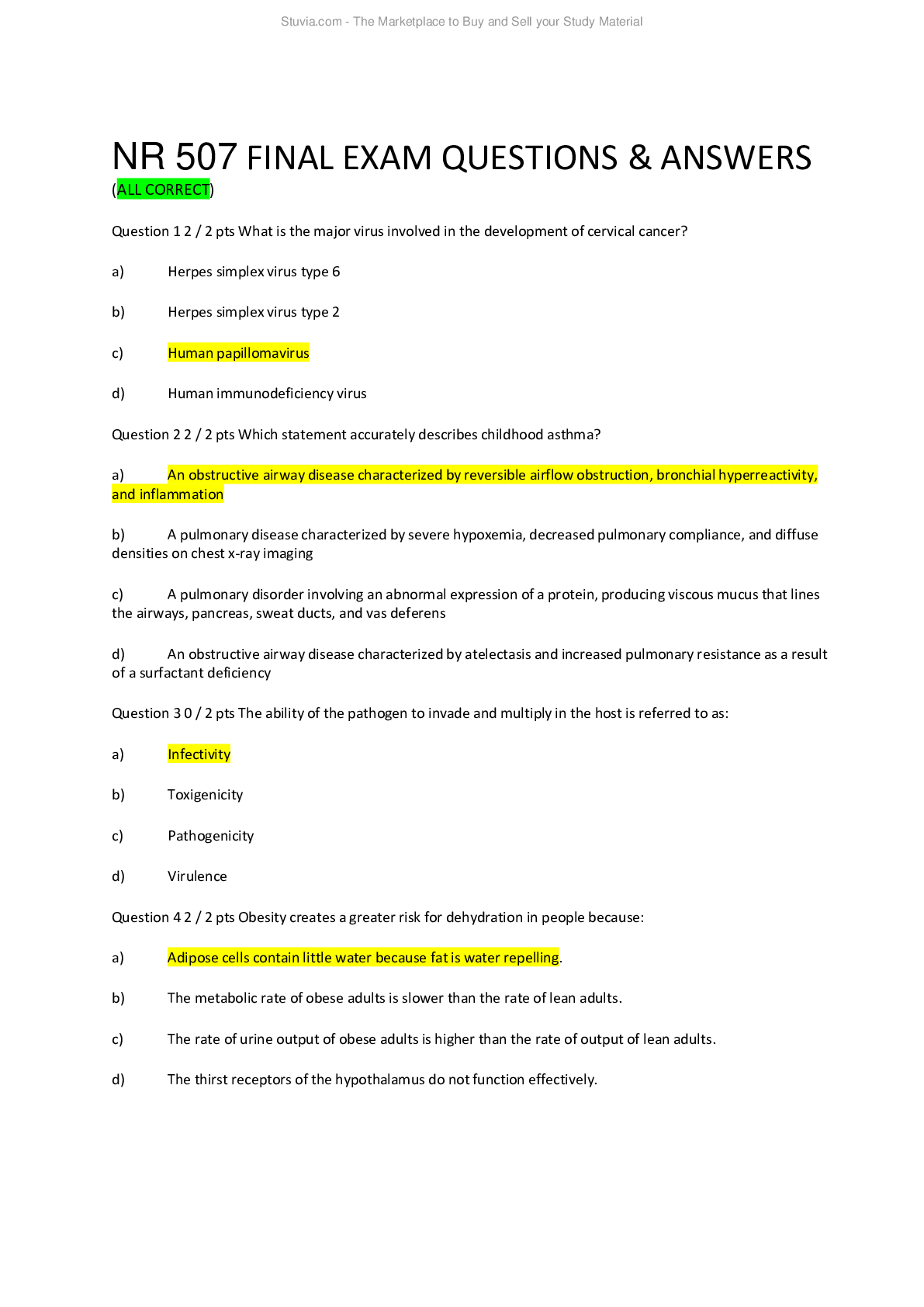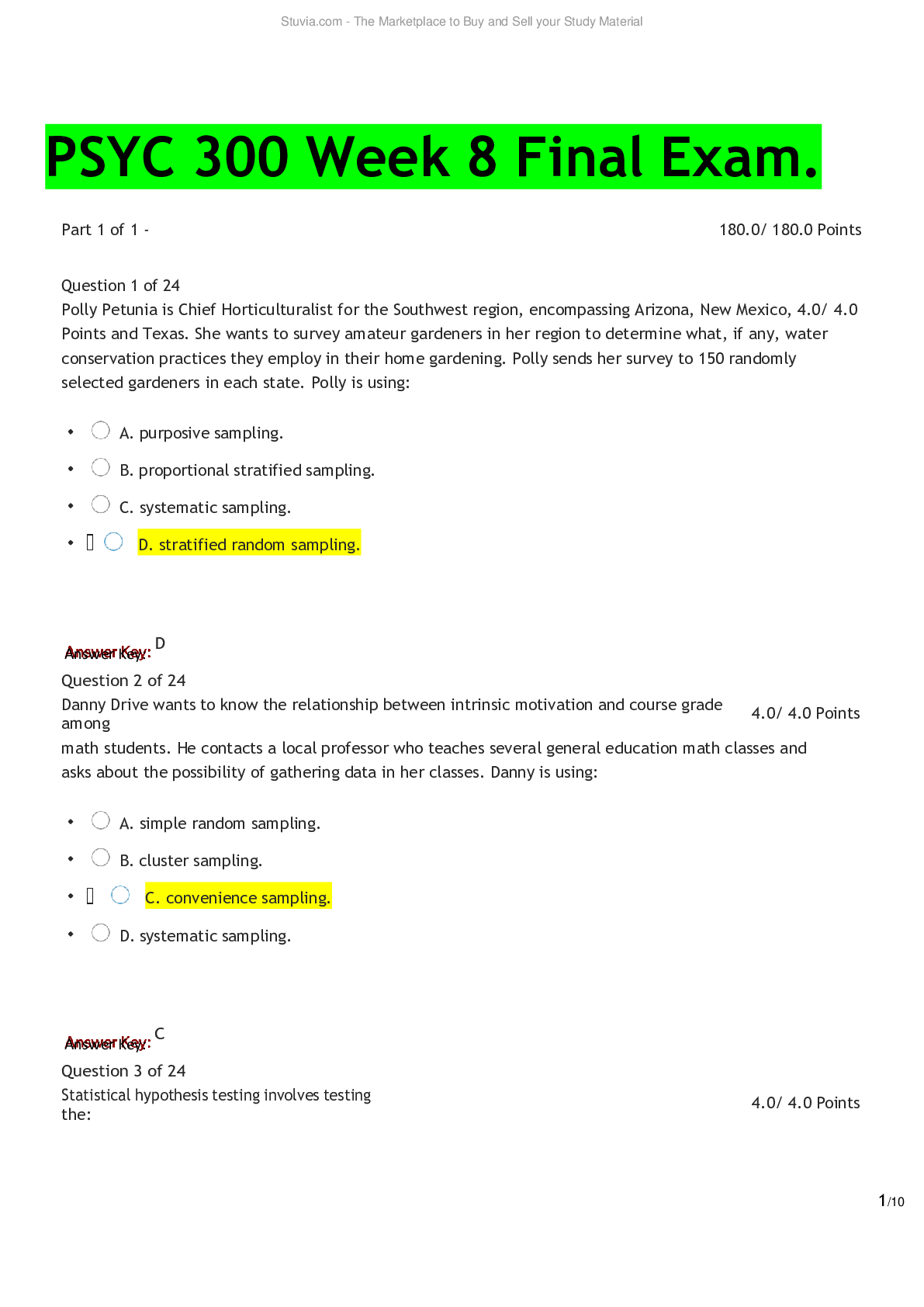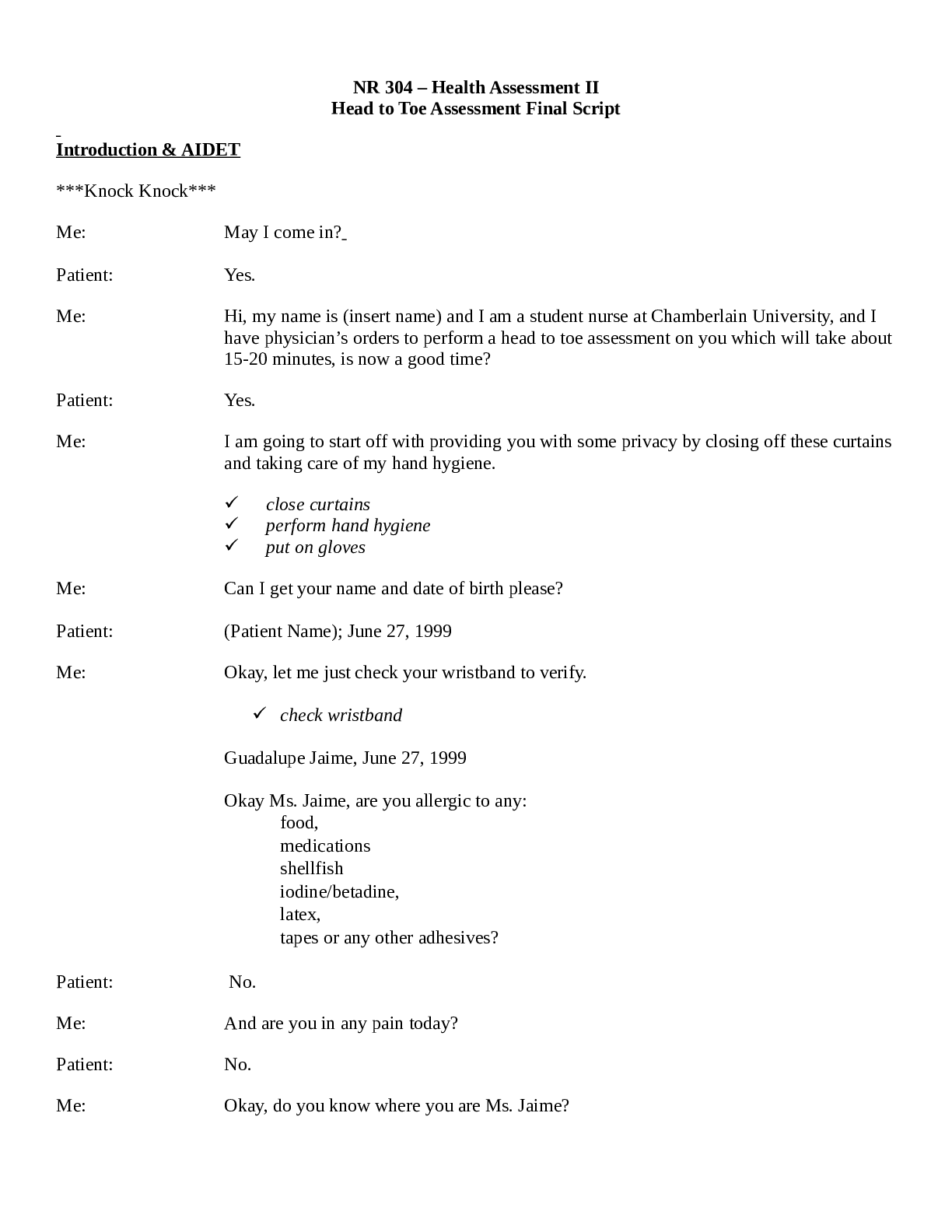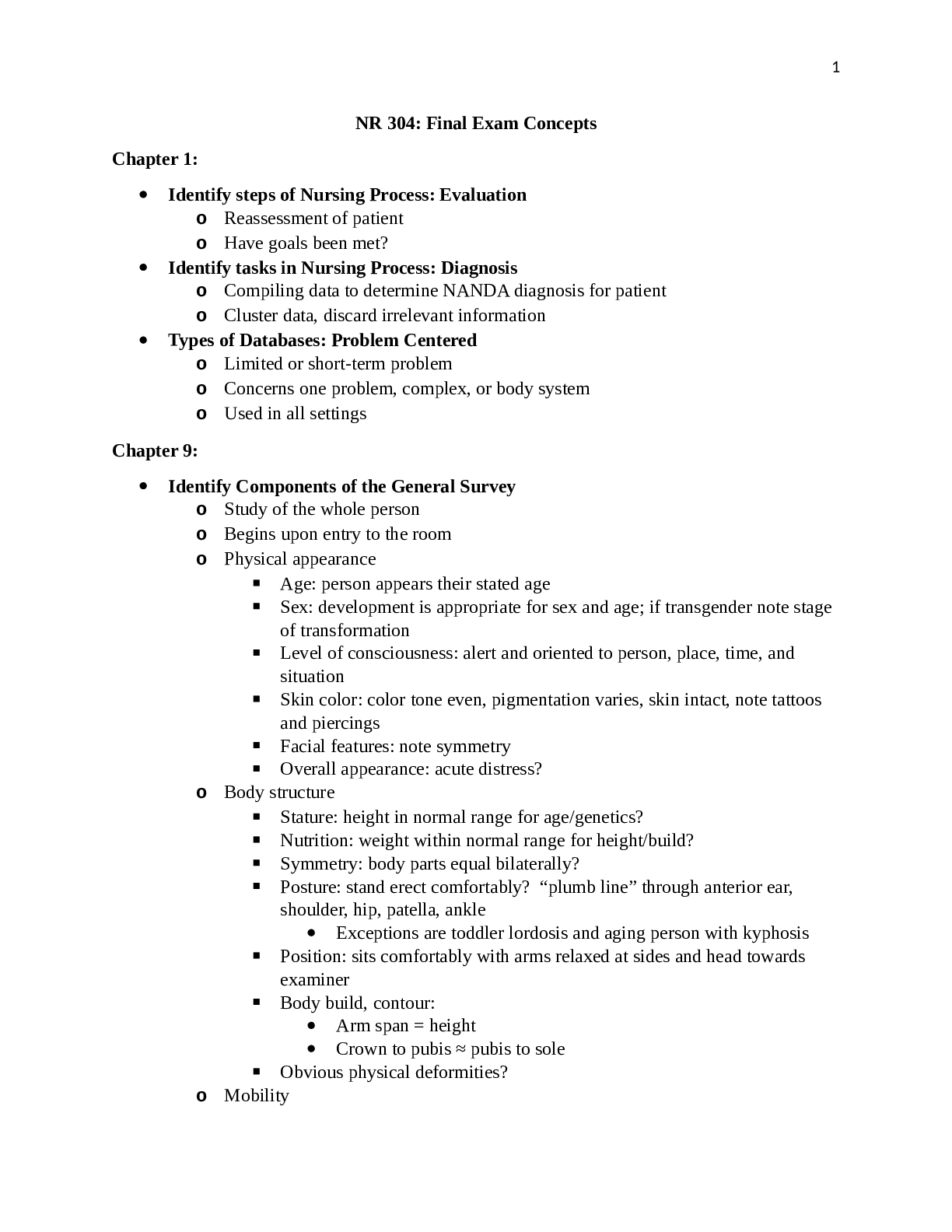*NURSING > Final Exam Review > NUR2058 DIMENSIONS OF NURSING PRACTICE FINAL EXAM CONCEPT GUIDE (All)
NUR2058 DIMENSIONS OF NURSING PRACTICE FINAL EXAM CONCEPT GUIDE
Document Content and Description Below
strategies help? (Chapter 1 addressed the first two questions; this chapter helps you answer the rest.) • Build trust in relationships and aim for mutual communication in all interactions. Skilled c... ommunication and open, honest exchange of facts, thoughts, ideas, and feelings is key. • Use an evidence-based reference to ensure that everyone in your group has a common understanding of what critical thinking entails. These guides serve as “talking points” to discuss what’s going well and what needs to be improved. Everyone must be “on the same page.” • Make the commitment to develop the attitudes, knowledge, and skills needed for critical thinking. 5. Ask for feedback—formal and informal evaluation related to your thinking and performance are crucial for improvement. You need to know what you’re doing well and what you can do to improve. Chapter 3: Describe the importance and difference between nursing theories and models Grand theory: provides a conceptual framework under which the key concepts and principles of the discipline can be identified. Middle range theory is more precise and only analyses a particular situation with a limited number of variables. Practice theory: explores one particular situation found in nursing Nursing models are constructed of theories and concepts. They are used to help nurses assess, plan and implement patient care by providing a framework within which to work. Nursing models also help nurses achieve uniformity and seamless care. Chapter 3: Four Key Concepts What are the four key concepts of any nursing model? Although nursing models vary in terminology and approach to health care, four concepts are common to almost all of them: Client or patient (individual or collective), health, environment, and nursing. Each nursing model has its own specific definition of these terms, but the underlying definitions of the concepts are similar. The concept of client (or patient) is central to all nursing models because it is the client who is the primary recipient of nursing care. Although the term client usually refers to a single individual, it can also refer to small groups or to a large collective of individuals (e.g., for community health nurses, the community is the client). Chapter 3: Differences Between Theories and Models What is the difference between a theory and a model? What is their purpose? The nursing profession tends to use the term theory when attempting to explain apparent relationships between observed behaviors and their effects on a client's health. In this nursing context, the goal of a theory is to describe and explain a particular nursing action to make a hypothesis, which predicts the effect on a client's outcome, such as improved health or recovery from illness. For example, the action of turning an unresponsive client from side to side every 2 hours should help to prevent skin breakdown and improve respiratory function. A model is a hypothetical representation of something that exists in reality. The purpose of a model is to explain a complex reality in a systematic and organized manner. For example, a hospital organizational chart is a model that attempts to demonstrate the interrelationships of the various levels of the hospital's administration. Although a model tends to be more concrete than a theory, they both help explain and direct nursing actions. This ability, using a systematic and structured approach, is one of the key elements that raises nursing from a task-oriented job to the level of a profession that uses judgment and knowledge to make informed decisions about client care. With the use of a conceptual model, nurses can provide intelligent and thoughtful answers to the question, “What do nurses do?” Consider the quoted scenario above. Chapter 4: What is care management? What is the role of the case manager? Care management is a general term that refers to a method of coordinating care either with an individual client or on a system-wide basis. Case management, in a health-care system driven by the demand for betterquality and cost- effective care, usually is associated with coordinating care for individual clients as they move from one level to another through the health-care system. Case management is now a certified specialty; however, there is a lack of qualified nurses trained in case management. Almost all the proposals for revisions in the health-care system include the case manager as an important element in the overall management of care. Chapter 4: The IOM Competencies and the Future of Nursing; QSEN Competencies for Nursing Curriculum the four key messages • Nurses should practice to the full extent of their education and training. • Nurses should achieve higher levels of education and training through an improved P [Show More]
Last updated: 2 years ago
Preview 1 out of 17 pages

Buy this document to get the full access instantly
Instant Download Access after purchase
Buy NowInstant download
We Accept:

Reviews( 0 )
$9.00
Can't find what you want? Try our AI powered Search
Document information
Connected school, study & course
About the document
Uploaded On
Apr 16, 2021
Number of pages
17
Written in
Additional information
This document has been written for:
Uploaded
Apr 16, 2021
Downloads
0
Views
81



 (1)_removed.png)



_removed.png)
_removed.png)

_removed.png)





.png)



.png)
.png)

